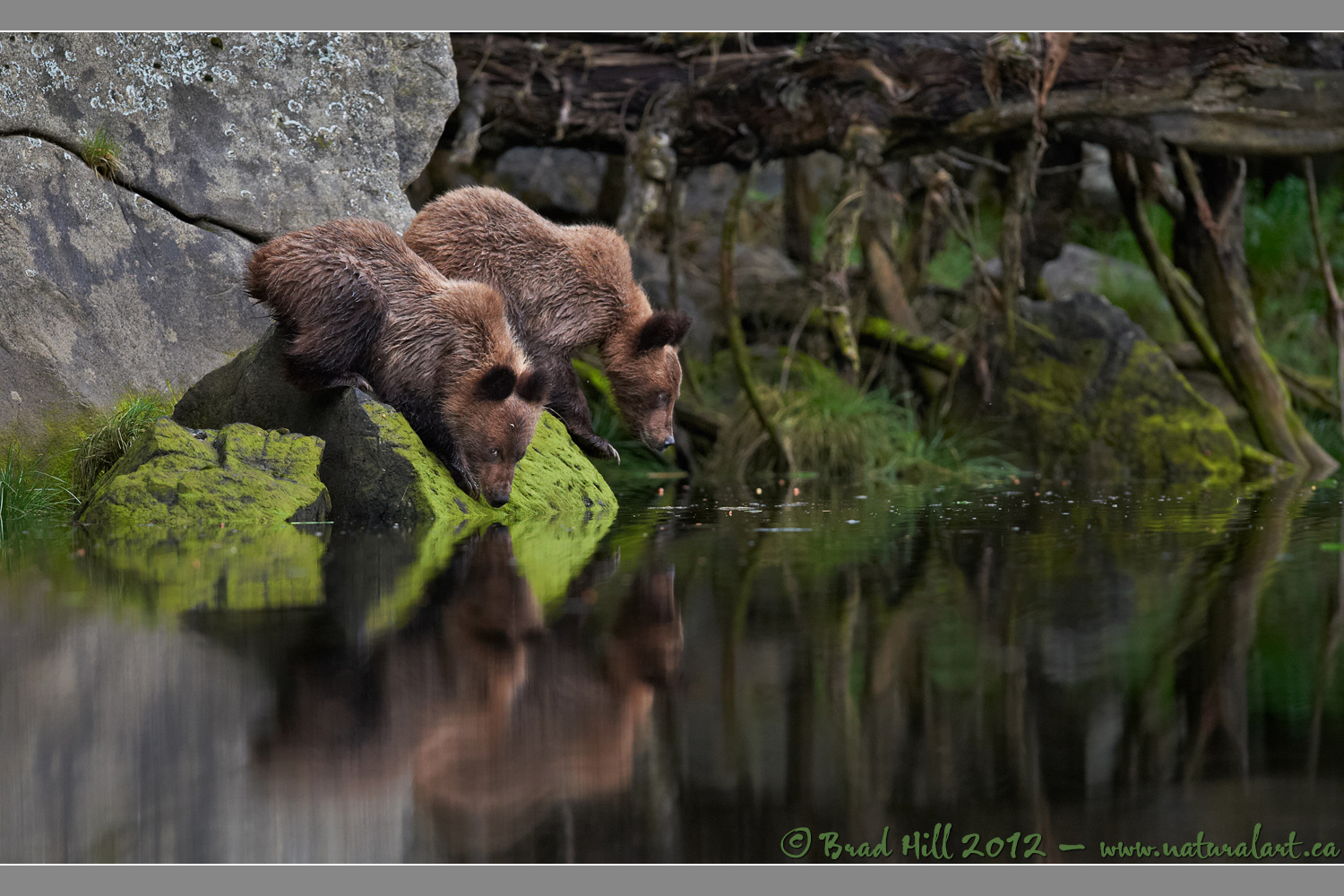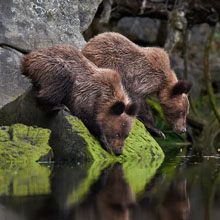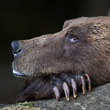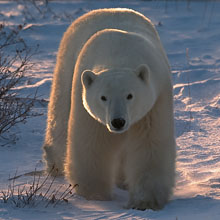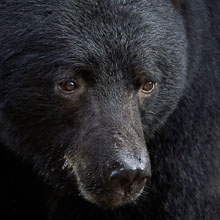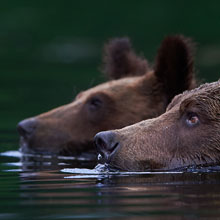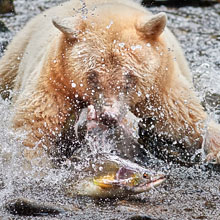Availability: Undetermined - Enquiries?
In the Field
Olympic Trials - Khutzeymateen Style! Khutzeymateen Grizzly Sanctuary, Great Bear Rainforest, BC, Canada. May 31, 2012.
I was smiling when I captured this image. The pose and expressions of these grizzly bear cubs reminded me of swimmers lined up on the starting blocks, anticpating the starter's gun. And, despite rumours to the contrary, Canada is NOT considering entering ursids as "ringers" on the 2012 Olympic swimming team!
So what WAS going on here? These year-old cubs are poised on the edge of a reasonably wide channel at high tide in the Khutzeymateenb estuary. About 5 minutes before this was shot mom casually swam across. For some reason - perhaps the imposing width of the channel or perhaps the thought of exposing themselves in an open area when large male grizzlies were lurking nearby - the cubs were very reluctant to cross. It was fascinating watching these little bruins examine EVERY non-swimming option ("hmmm...maybe up this rock...nope...maybe along this branch...nope...") before they decided to swim the channel. The entire scene - from before mom swam across to when the cubs eventually joined her on the opposite sides - was one of the best half hour's worth of bear viewing (and bear photography) I have ever experienced. Just magical...
On the technical side, while I've very much liked the D4 since the day it arrived, this shot really "sealed the deal" in convincing me it was a big step up from the D3s. This image was shot at ISO 6400. The only noise reduction performed on it was the "default" values of my raw converter (Capture One Pro). And, as you can see, it is quite noise free. But, more importantly to me, the shot has retained MUCH better tonal range in the shadow regions (meaning better dark-on-dark detail and tonal separation) than the D3s would have. There's virtually no "blocking up" of the dark regions and colour is spot-on (NOTE: I DESATURATED the nearly florescent green moss/vegetation on the rocks by 15% in Photoshop - it WAS that bright). With this great ISO performance, the improved Auto ISO function becomes even more invaluable (when there's less of a penalty for shooting at crazy ISO's). Add in the improved autofocus (and it IS much better) and you're left with a camera that almost never misses. The D4 extends the limits of what you can do with a camera pretty significantly, especially if you're the type of shooter that tends to push the limits of what your gear can handle...
These cute little tykes look great in a higher resolution form of the image. So here's a 2400 pixel version for your perusal and enjoyment:
• Olympic Trials - Khutzeymateen Style! Download 2400 pixel image (JPEG: 0.9 MB)
ADDITIONAL NOTES:
1. This image - in all resolutions - is protected by copyright. I'm fine with personal uses of them (including use as desktop backgrounds or screensavers on your own computer), but unauthorized commercial use of the image is prohibited by law. Thanks in advance for respecting my copyright!
2. This image was captured during one of my two spring "Grizzlies of the Khutzeymateen" photo tours in May/June of 2012. Each year I offer trips into two different parts of the Great Bear Rainforest as well as one to photograph aquatic mammals and oceanscapes near the northern tip of Vancouver Island. And, in selected years, I also offer photo tours to locations to capture other highly sought-after subjects, such as various boreal owl species and wildlife of Canada's Arctic. Details about these trips can be found on the Photo Tours page of this website.
3. Like all wildlife photographs on this website, this image was captured following the strict ethical guidelines described in The Wildlife FIRST! Principles of Photographer Conduct. I encourage all wildlife photographers to always put the welfare of their subjects above the value of their photographs.
Behind the Camera
Olympic Trials - Khutzeymateen Style! Khutzeymateen Grizzly Sanctuary, Great Bear Rainforest, BC, Canada. May 31, 2012.
Digital Capture; Compressed RAW (NEF) 14-bit format; ISO 6400.
Nikon D4 paired with Nikkor 400mm f2.8 VRII lens. Hand-held from floating Zodiac. VR on and set to "normal" mode.
1/400s @ f4.5; -0.33 stop compensation from matrix-metered exposure setting. Auto ISO engaged with Auto shutter speed enabled (shutter speed keyed to focal length of lens with no compensation).
At the Computer
Olympic Trials - Khutzeymateen Style! Khutzeymateen Grizzly Sanctuary, Great Bear Rainforest, BC, Canada. May 31, 2012.
RAW Conversion to 16-bit TIFF, including first-pass/capture sharpening using Capture One Pro. Three raw variants (processed from raw) differing by a total of 1.0 stops in exposure.
Further digital corrections on resulting 16-bit TIFF files using Adobe's Photoshop CS6 and Light Craft's Lightzone. Photoshop adjustments including compositing the raw conversion variants (layering and masking), selective colour desaturation (green vegetation on rocks desaturated by 15%), and selective sharpening for web output. Final tone tweaking performed using tonemapper/re-light tool in Lightzone.
Conservation
Olympic Trials - Khutzeymateen Style! Khutzeymateen Grizzly Sanctuary, Great Bear Rainforest, BC, Canada. May 31, 2012.
Ten percent of the revenue generated by this image will be donated to Raincoast*.
Species Status in Canada**: Special Concern (May 2002).
While Grizzly Bears (Ursus arctos) are not technically listed as "Endangered" in Canada, they have been extirpated from most of their historical range. Grizzly Bears are far more sensitive to intrusion/disturbance in their habitat than are Black Bears and are being increasingly forced into marginal habitat by human encroachment. The Great Bear Rainforest along the central and northern coast of British Columbia is one of the last strongholds of the Grizzly Bear in Canada, and even this population is coming under increasing pressure.
On December 18, 2017 the government of British Columbia banned grizzly hunting across the entire province. This major conservation victory came after decades of tireless work by many dedicated conservationists and ecologists and, most importantly, it reflects the opinion of the vast majority of British Columbians. And, it means that AT LEAST while the current government remains in power grizzlies are finally "safe" in British Columbia.
Now that we've at least temporarily won the battle to save grizzlies in BC, it's time to re-focus our efforts toward protecting ALL of BC's carnivores, including Gray Wolves, Black Bears, Cougars, Wolverines, and more! Simply put, there are no ecological, economic, or ethical arguments supporting the trophy hunting of carnivores.
In a great first step towards ending the hunting of carnivores throughout BC the Raincoast Conservation Foundation has developed a program designed to protect ALL carnivores within the Great Bear Rainforest. Details about this program can be found on this page on Raincoast's website. Check it out and, better yet, make a donation to help Raincoast purchase the remaining commercial hunting tenures in the Great Bear!
*The Raincoast Conservation Society (and Foundation) is an effective and efficient organization that has been fighting for protection of this unique habitat. If you are looking for a meaningful way to contribute to the conservation of this amazing ecosystem, Raincoast will provide maximal "bang" for your conservation dollars.
**as determined by COSEWIC: The Committee on the Status of Endangered Wildlife in Canada












